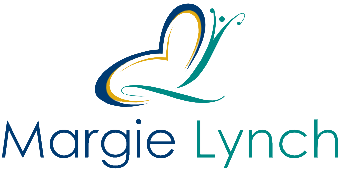When was the last time someone told you to “find better work-life balance”? This well-intentioned advice has become so common that we rarely question its premise. But what if the entire concept of “work-life balance” is setting us up for disappointment?
The Balance Myth
For years, I chased the elusive ideal of perfect balance—equal time for career, family, self-care, and personal pursuits. As a single mom while working full-time in HR leadership, I constantly felt I was failing at this impossible standard.
The metaphor of balance suggests that work and life are opposing forces on a seesaw—when one rises, the other must fall. This creates an artificial division between our professional and personal selves that doesn’t reflect how we actually experience life.
Research from positive psychology offers a more nuanced perspective. Martin Seligman’s work on flourishing suggests that wellbeing comes not from perfect equilibrium between competing priorities, but from meaningful engagement across multiple areas of life.
From Balance to Integration
The turning point in my relationship with “balance” came while teaching at the University of St. Catherine on Saturday mornings. Many of my students were working women juggling careers, education, and family responsibilities. In their determination, I recognized my own journey.
Together, we explored a more practical approach: work-life integration.
Integration acknowledges that our various roles and responsibilities aren’t separate competing domains but interconnected parts of a whole life. Rather than striving for perfect balance, we can seek alignment between our values and how we allocate our energy and attention.
The Wellbeing Connection
This shift from balance to integration directly impacts our wellbeing in several key ways:
Mental Wellbeing: The constant strain of trying to achieve perfect balance creates cognitive load and often leads to what psychologists call “role conflict.” Integration reduces this mental burden by acknowledging that our identities are multifaceted rather than compartmentalized.
Emotional Wellbeing: Positive emotions expand our capacity for creativity and resilience. When we stop viewing work and personal life as a zero-sum game, we create more opportunities for these positive emotions to flourish.
Physical Wellbeing: The stress of perpetually falling short of “balance” has real physical consequences. Integration allows us to prioritize health-supporting activities like exercise and sleep as non-negotiable elements of our whole life, not just our “personal time.”
Social Wellbeing: True integration honors our connections with others. Meaningful relationships are essential to wellbeing, whether those connections happen in professional or personal contexts.
Practical Steps Toward Integration
Moving beyond balance requires practical approaches. Here are evidence-based strategies that transformed my own relationship with work and life:
- Identify your core values. Clarity about what matters most provides a compass for decision-making across all domains. When I recognized that learning and growth were core values, pursuing education while working no longer felt like competing priorities but aligned pursuits.
- Practice time confetti collection. Even small moments of meaning and joy contribute significantly to overall wellbeing. Instead of waiting for large blocks of “me time,” I learned to collect and appreciate smaller moments throughout the day.
- Establish keystone habits. Certain habits create a ripple effect that improves multiple areas of life simultaneously. For me, regular morning exercise became a keystone habit that enhanced both professional performance and personal wellbeing.
- Create boundaries, not walls. While total separation between work and personal life isn’t realistic or necessary, healthy boundaries remain essential. Kristin Neff’s work on self-compassion suggests that clear boundaries are actually an act of self-care.
- Build in recovery cycles. Peak performance in any domain requires adequate recovery. I learned to view rest not as indulgence but as necessary preparation for meaningful engagement.
Learning from Experience
My journey from HR executive to launching my Coaching and Consulting business brought these principles into sharper focus. The flexibility of coaching allows me to integrate work with other priorities rather than constantly fighting for balance between them.
Leading Employee Resource Groups and global diversity initiatives in my corporate roles taught me that many professionals—particularly women—struggle with similar challenges. The perfectionist approach to balance creates unnecessary stress and actually undermines the wellbeing it claims to support.
In both my coaching with women navigating career transitions and my corporate leadership roles, I saw how integration offered a more sustainable path to wellbeing than the perpetual pursuit of perfect balance.
A New Framework
Rather than asking “How can I balance work and life better?” try these questions:
- “How can I bring more of my authentic self to all areas of my life?”
- “Where do my various commitments align with my core values?”
- “What boundaries would support my wellbeing while honoring all my passions?”
- “How can I design recovery into my routine to sustain energy for what matters most?”
The path beyond balance isn’t about achieving perfect harmony between competing priorities. It’s about creating a life where your various commitments and passions reinforce rather than undermine each other.
This approach creates what positive psychologists call “upward spirals”—virtuous cycles where improvements in one area of life enhance others, creating sustainable momentum toward overall wellbeing.
What would shift for you if you moved beyond balance toward integration? Book a discovery call and let’s talk!

